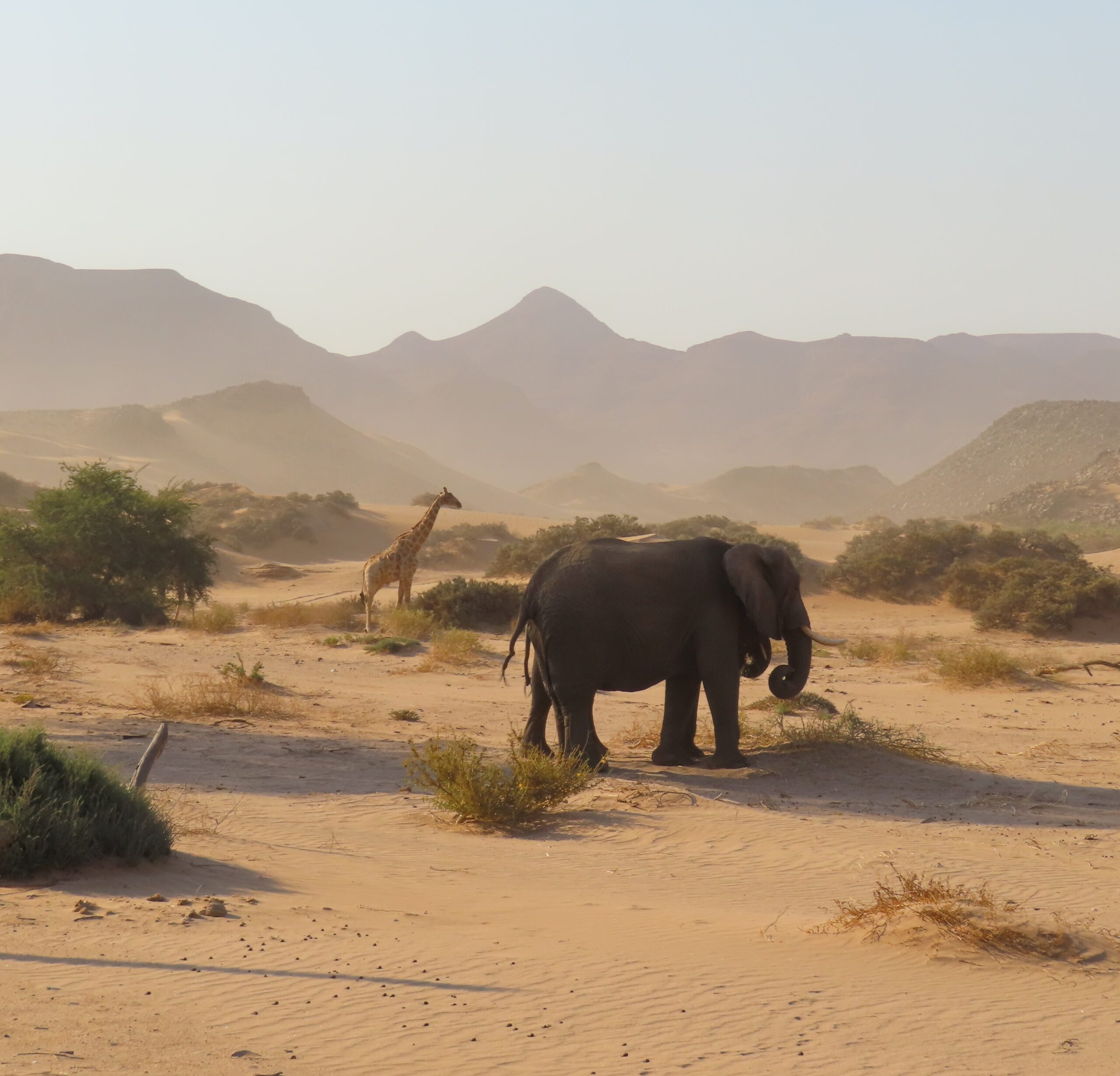People lucky enough to see Mountain Gorillas in the wild speak of the emotion of their first sightings. Resulting, in some part, from : the exertion of the climb, the adrenalin linked to the danger, the privilege of seeing something so few see and maybe shame that we humans have taken them so close to the brink. But then you are also looking in to the eyes of one of our ancestors.
Seeing your first wild desert elephants has that same gut wrenching feeling and leaves no dry eyes in the group..
You have this overwhelming feeling of peace and tranquility in their company. They are silent, graceful, serene and they rub alongside each other and touch in such soft ways that you forget that they are 6 tonnes of wildness and danger. They are now so few in number, and live in such a hostile (but beautiful) environment that you just want to do all you can for them.
We didn’t see our first elephants until 4pm but by then the light was perfect for pictures. The sunlight was dwindling and the air full of sand. Main picture.
The day started with a 3 hour drive from base camp, across a hospitable stony desert, until we arrived at the dry river bed of the Huab River. It was there that we honed our tracking skills. All the information you need is shown by their footprint : direction of travel, sex, length, height and age. Lastly, by picking up, breaking apart and assessing the water content of its dung you know how close the elephants are to your position. The photo is Brian learning the tricks of the trade.

Herman, our elephant expert, knows each elephant. Assessing even moods from their movements and actions. Herman is not only a EHRA employee, but is the local liaison if the elephants come in to conflict with humans. His sad stories, over the campfire, were of two elephants recently shot by a villager. If the villager had called him he could have steered the elephants away. Then a 25 year old male who had died 2 weeks earlier. An old discarded car tyre had got wrapped around one of its feet. Finding that it was not able to free itself, EHRA had applied for helicopter and vet from the Namibian Government to get it darted and freed. The elephant only survived for a week after the freeing. By this time it was too stressed to live. Even the wilderness of Africa suffers the scourge of human garbage.
After unsuccessfully tracking a bull elephant for a couple of hours we doubled back, drove for another 2 hours to then come across the Huab herd scattered across the landscape, chewing their way through leafy scraps in the raised sandbanks. What joy! We watched them for maybe 30 minutes in peaceful silence. Although they would know that we were there, they didn’t give a flicker of recognition.











From there a further 2 hours to the nearest rocky outcrop amidst a lunar landscape to set up camp. Camp was a simple format. Place a piece of tarpaulin with your back to the rocks and then place the two jeeps either side to form a barrier against what might stray in to the campsite.

That night we were treated to a magical sky. We would be 200 miles radius from the nearest light bulb and the sky was the blackest black you could imagine, but interspersed with millions of bright sparkly magical stars. To see the milky way, with your own eyes, is otherworldly.


Comments
3 responses to “Elephant Patrol – Day 1”
Wow! Fantastic. Just read the blog out loud to mum and dad over lunch in the wildlife trust cafe. They are thrilled that you have had such a great experience with the elephants.
What a fantastic experience.
I’m not surprised there wasn’t a dry eye.
So jealous of the night sky you saw, what a treat!!
Amazing, I love reading your adventure! xo